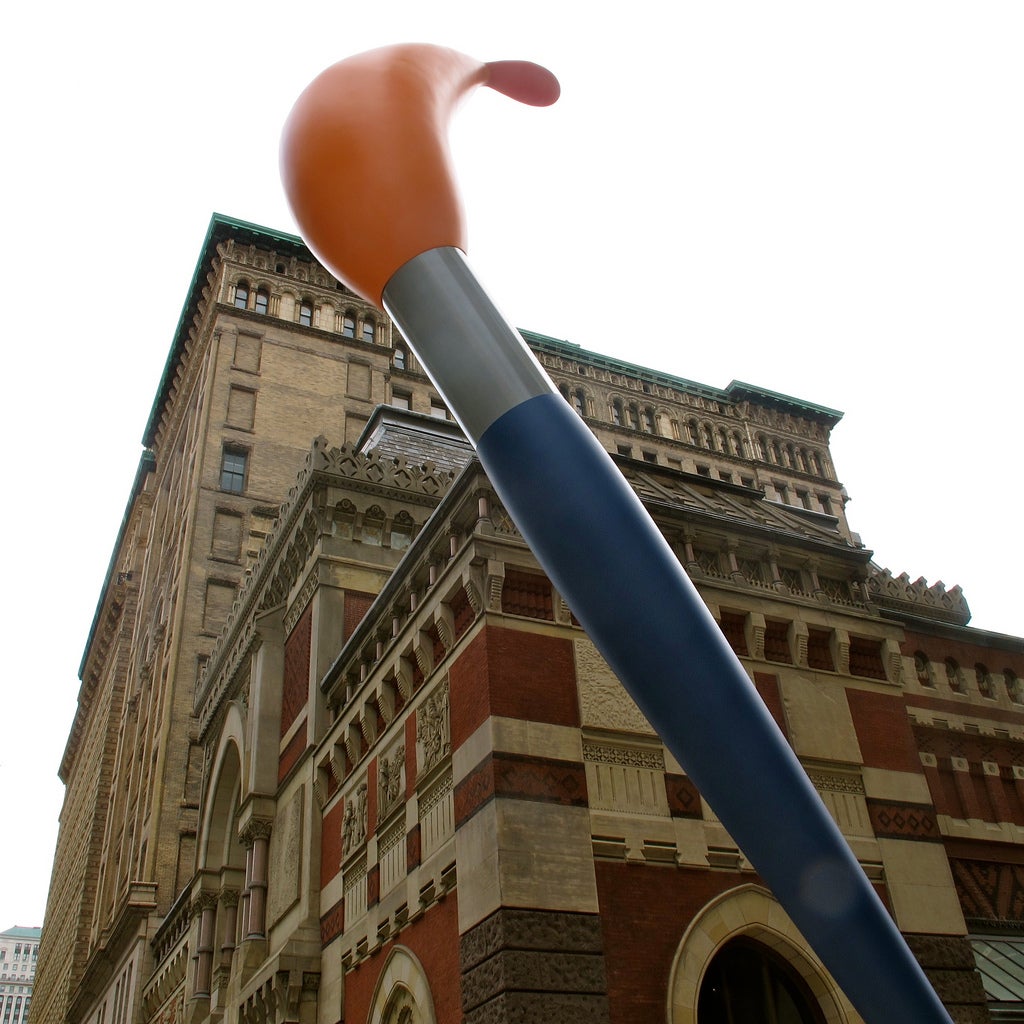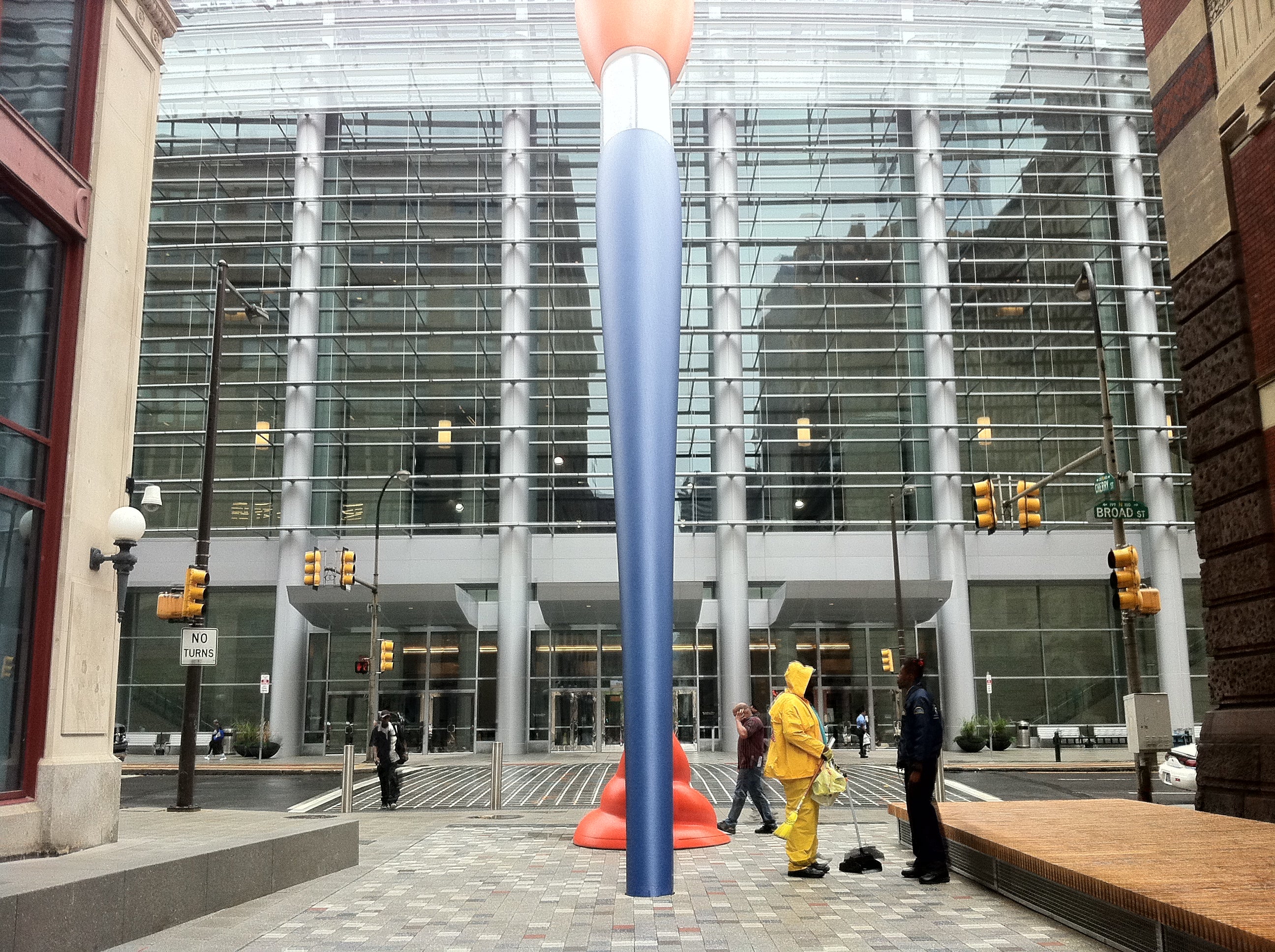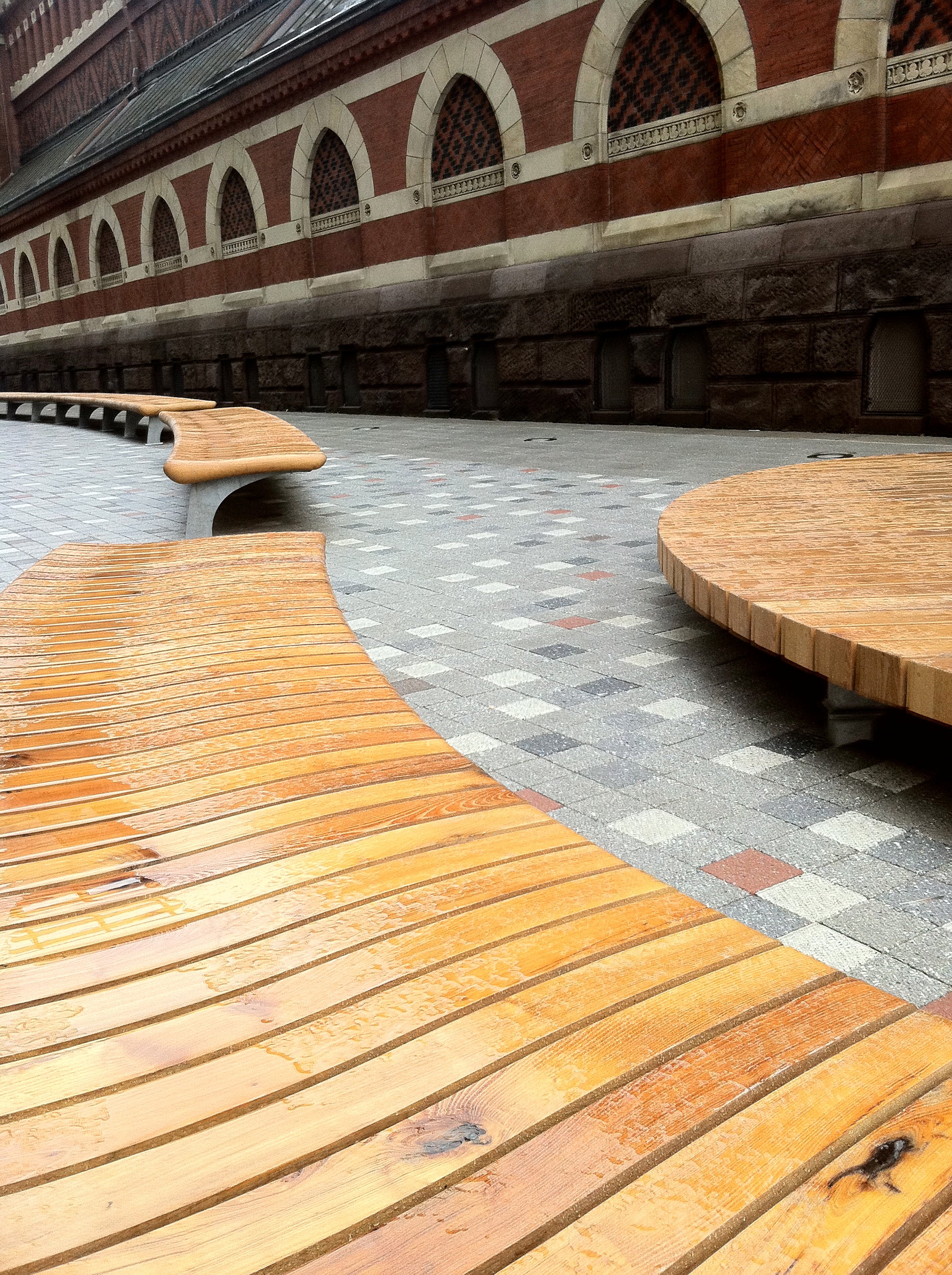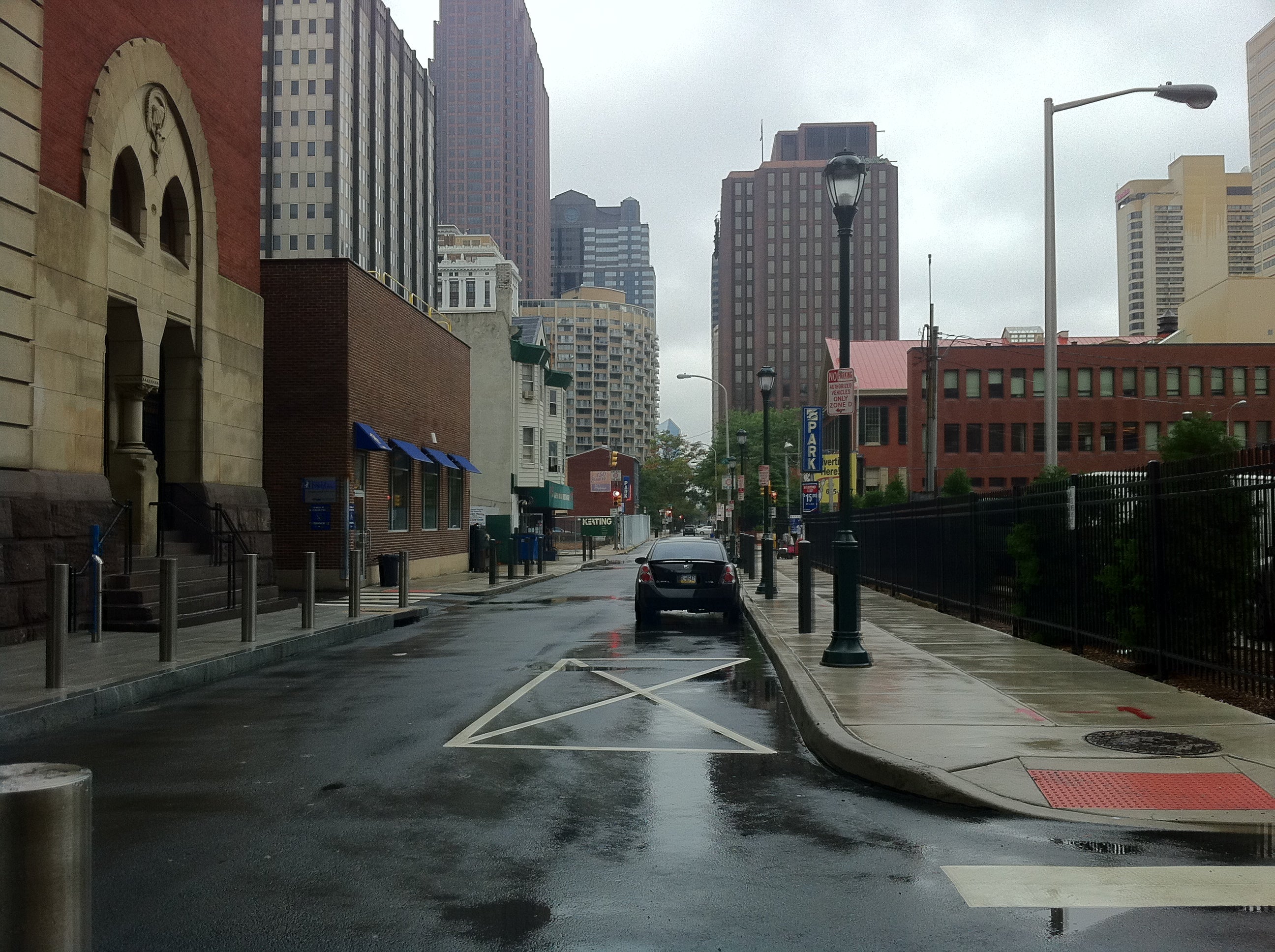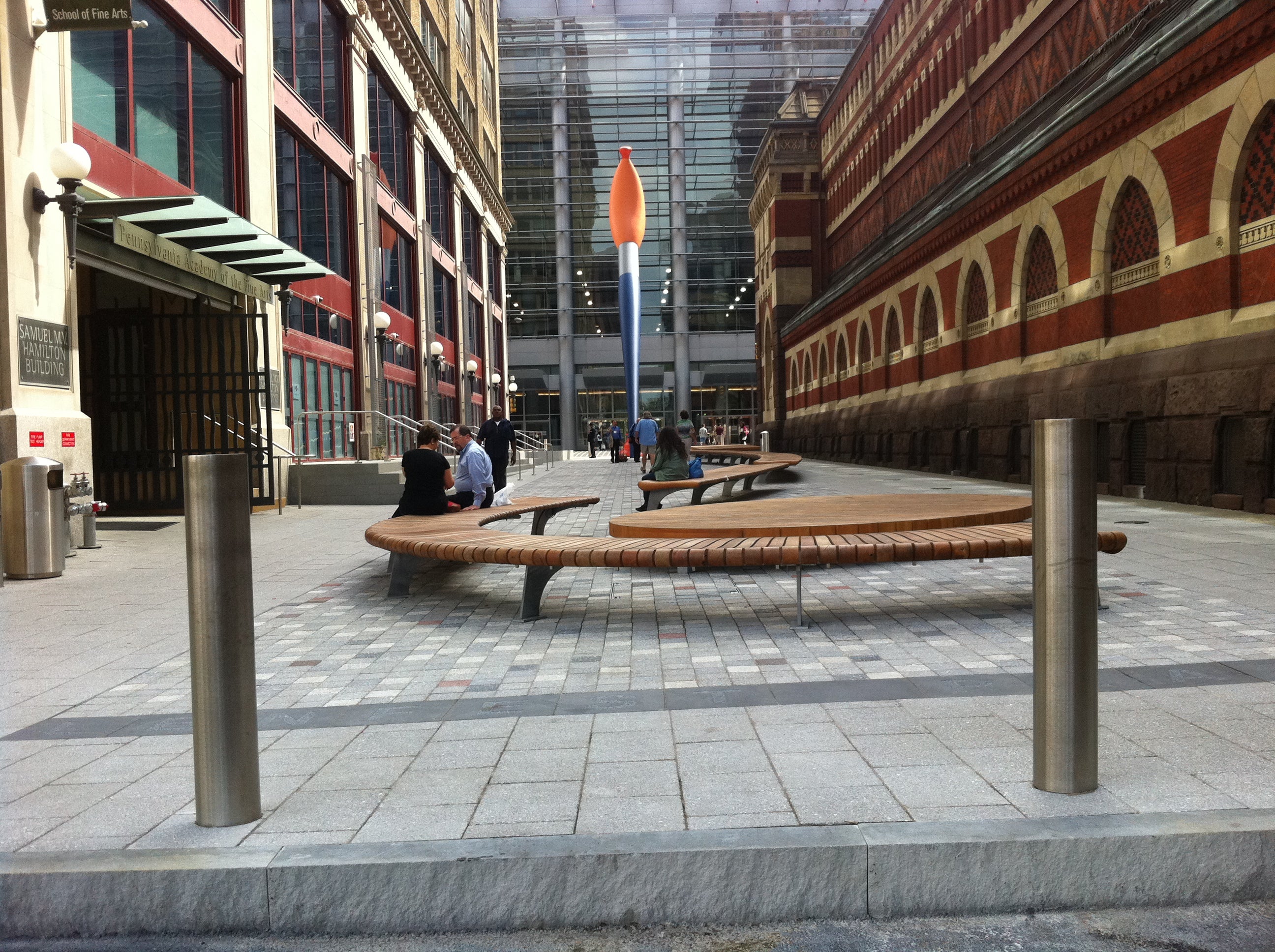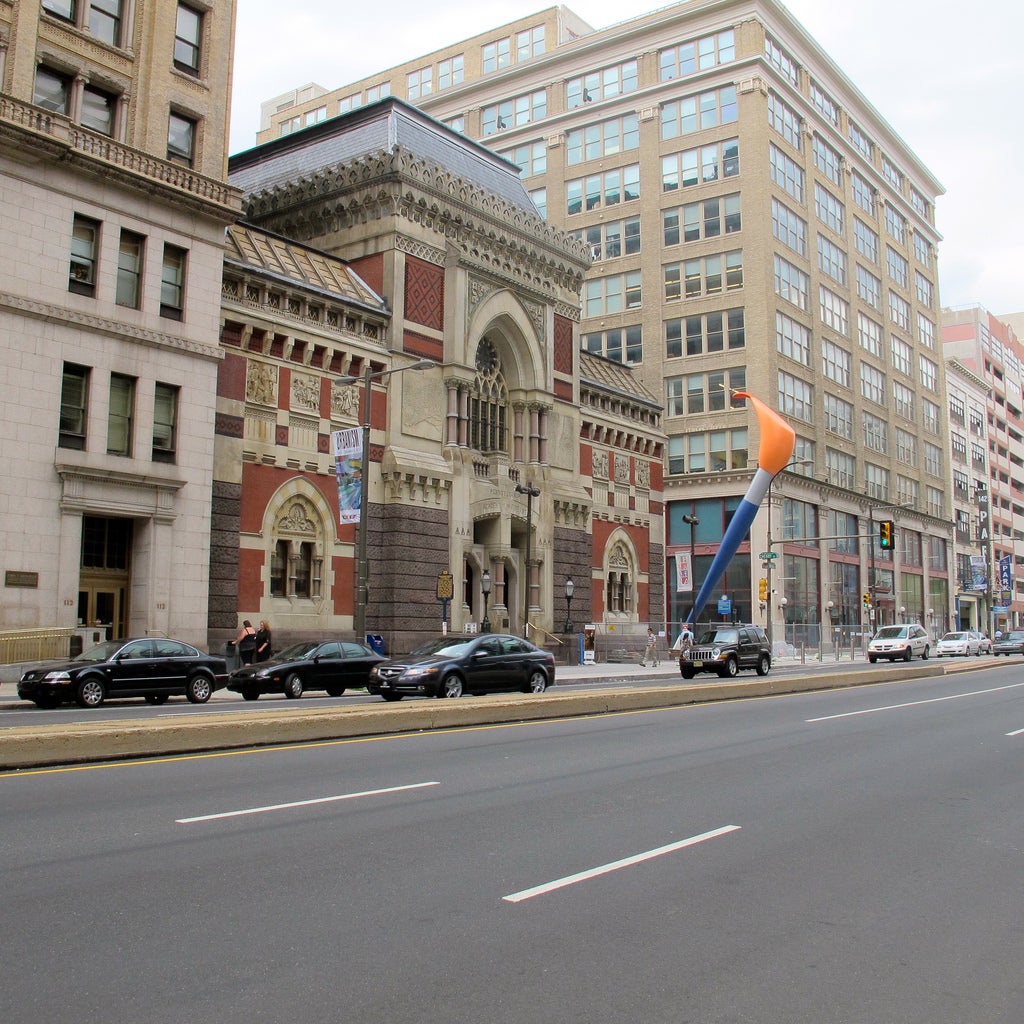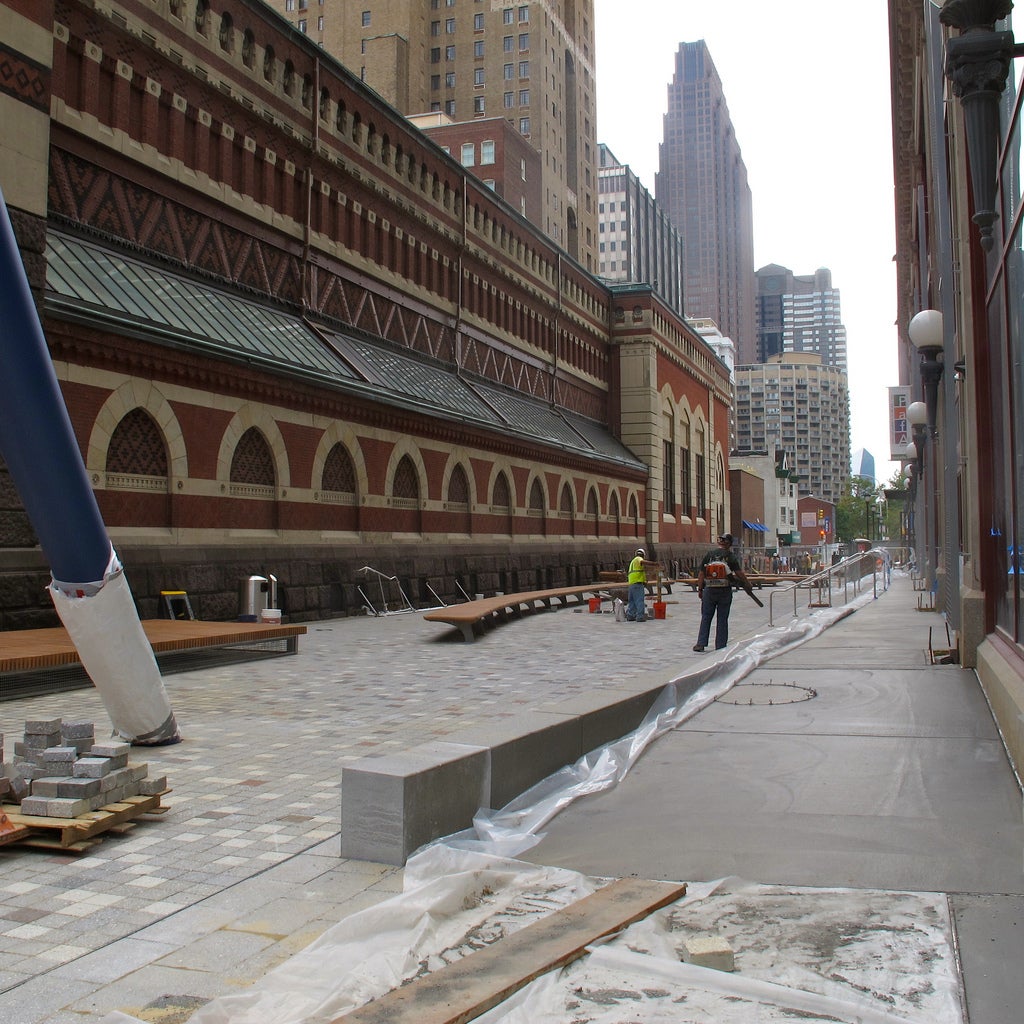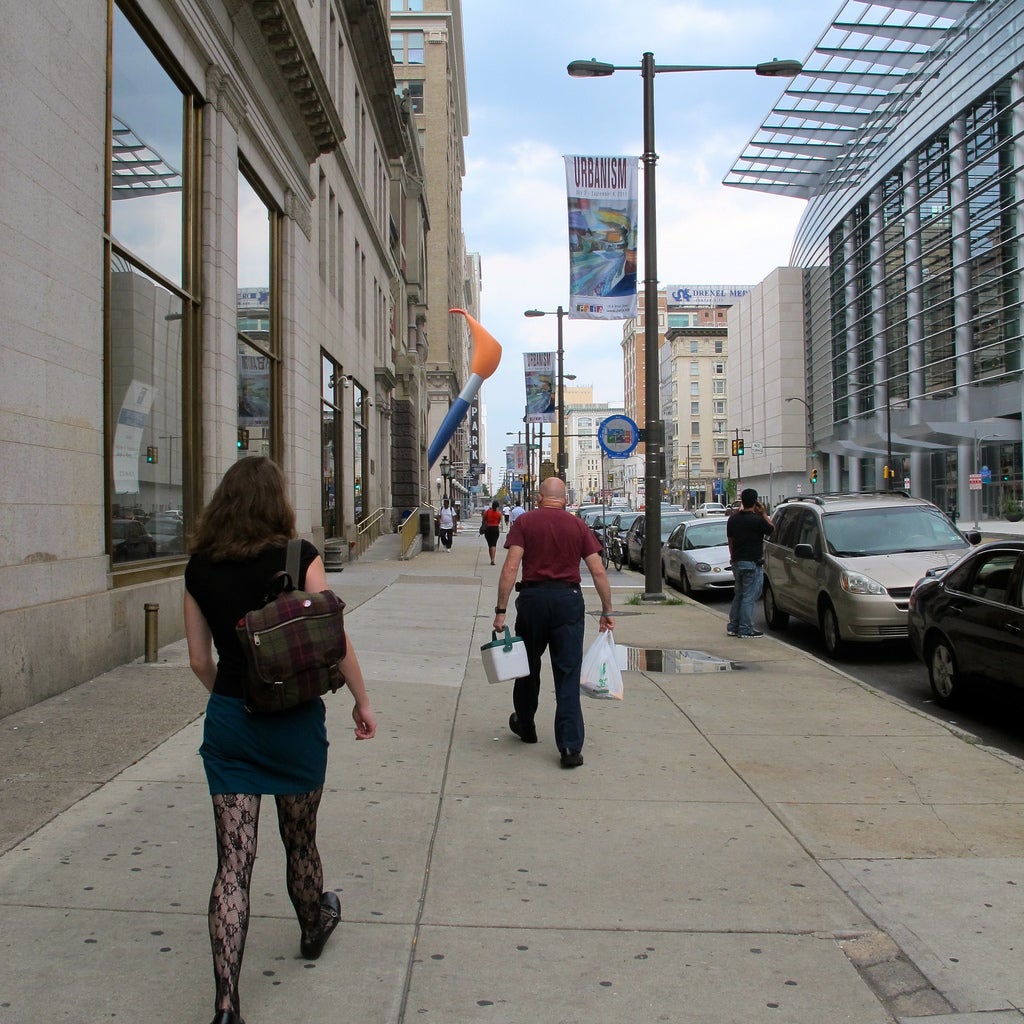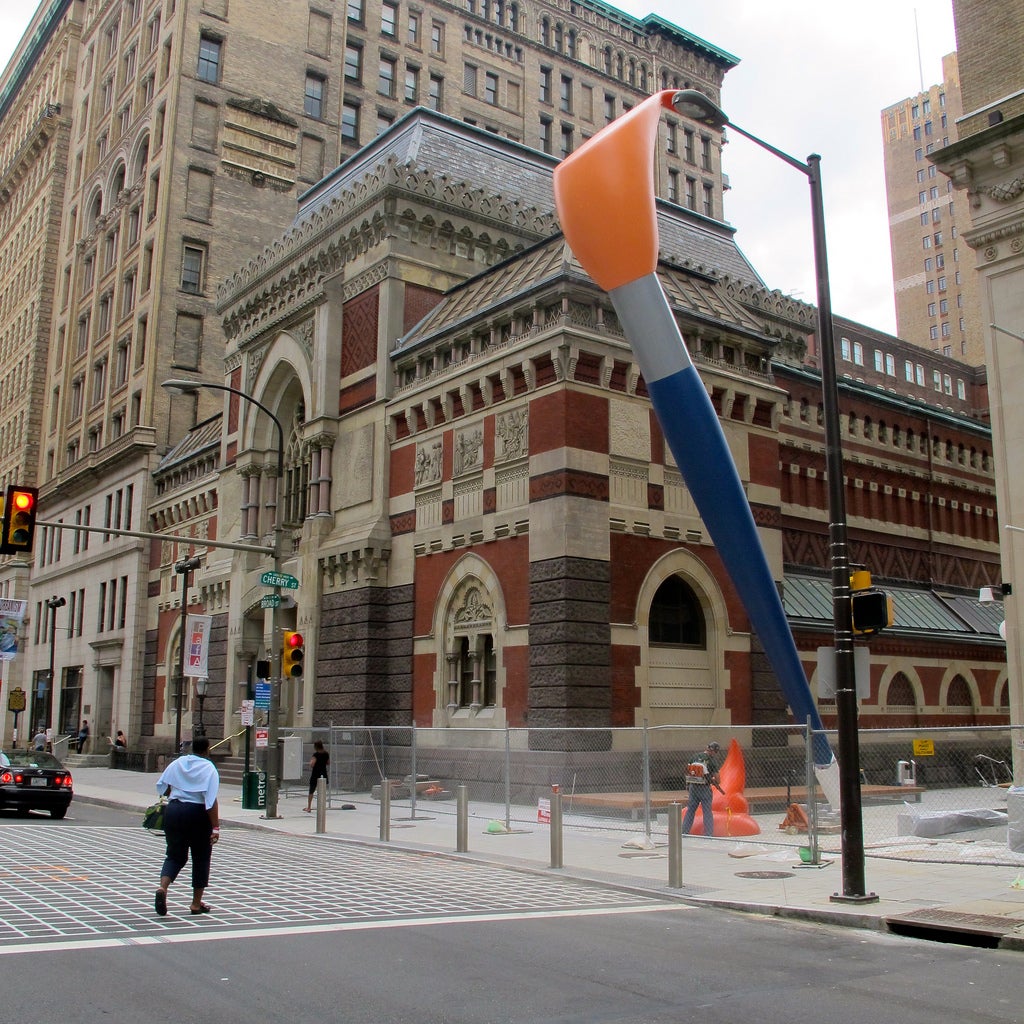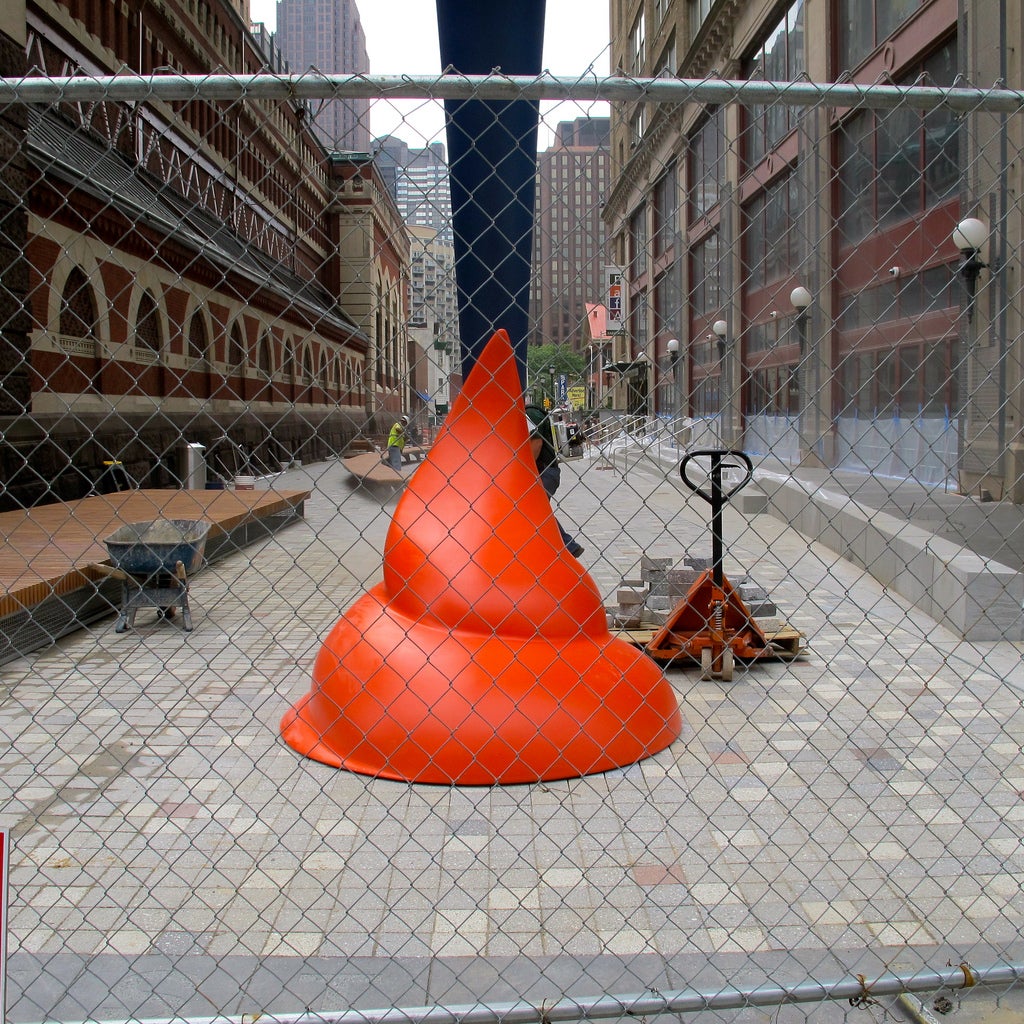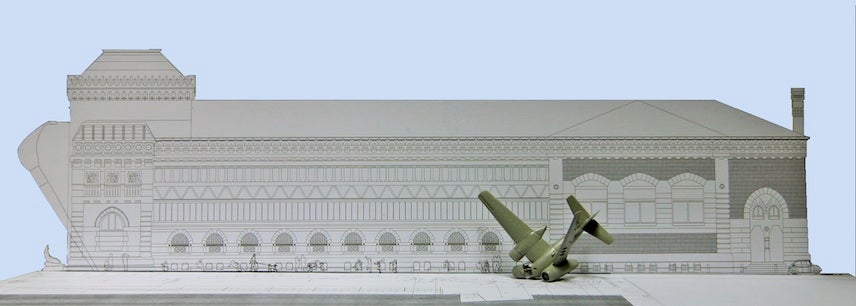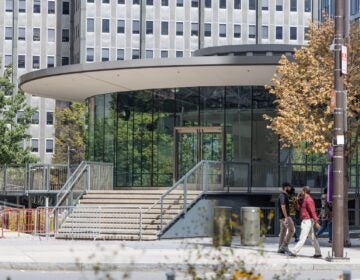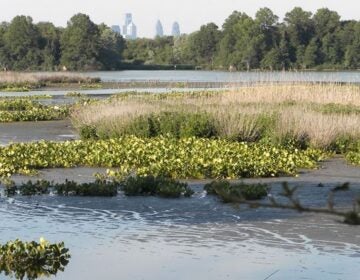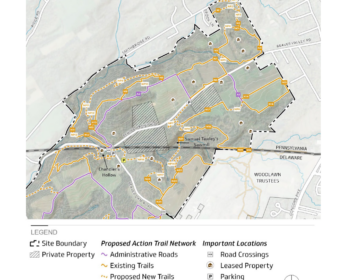Lenfest Plaza lights up this weekend
Start with a neglected alley and cover it with a tidy arrangement of gray, red and blue square pavers. Add a beguiling serpentine bench fashioned from black locust wood. Install a temporary sculpture designed to get people talking, and a permanent one destined to be an icon.
Presto — this weekend, the city officially unveils Lenfest Plaza, a new public space that’s the best thing to hit Broad Street since Billy Penn’s head arrived in City Hall courtyard.
Simple ingredients, but the list of Philadelphia players — from project managers Becker & Frondorf (who, among other aspects, coordinated the installation of “Paint Torch” by Claes Oldenburg), to landscape architects OLIN Partners, to The Lighting Practice (whose recent work also includes that at the revamped Rodin Museum garden) – is lengthy, and the process complicated.
Designing this significant public urban space meant “dealing with the negotiation between public and private infrastructure, using structurally sound materials, and working within a tight schedule and through multiple agencies — the Streets Department, SEPTA, telecom, water and sewer,” says David Rubin, an OLIN partner and lead designer on the project.
The goals for the piazza include better linking the two Pennsylvania Academy of Fine Arts buildings (the Frank Furness-designed masterpiece and the newer Samuel M.V. Hamilton Building), as well as creating linkages to the Benjamin Franklin Parkway to the west and the Pennsylvania Convention Center to the east, across Broad Street.
It also, not incidentally, allows a much better vantage of the side of the Furness building. Where once a narrow sidewalk brought intrepid strollers thisclose to the building at ground level, the new car-free plaza offers the opportunity to really examine the full sweep of the northern facade of the museum, on what used to be called Cherry Street.
Thoughtfully-considered design touches such as the precast concrete pavers (not at all cheap-looking), which pick out colors from the classic building, enhance the experience. OLIN’s addition of a wide staircase to the southern side of the new building seems as if it has always been there and serves to add to the plaza’s activity. The plaza is entered at grade level off of Broad Street, in a clean extension from the Convention Center entrance, but is marked by a nice high curb on the western end, at Carlisle Street. From that end, the room-like intent of the plaza is clear.
“Every design decision was filtered through the desire to have people be the main focus of the plaza,” says Rubin. “It intended to be a socially-sustainable site which promotes dialogue, no matter the reason for being there.”
The first (as-yet-to-be installed) temporary sculpture is certainly dialogue-provoking. Titled “Grumman Greenhouse,” this work by local sculptor Jordan Griska is crafted from a decommissioned Cold War-era U.S. warfare aircraft, made of armored aluminum. Griska has folded the metal of the nose and body so that the plane appears to have nose-dived into the plaza.
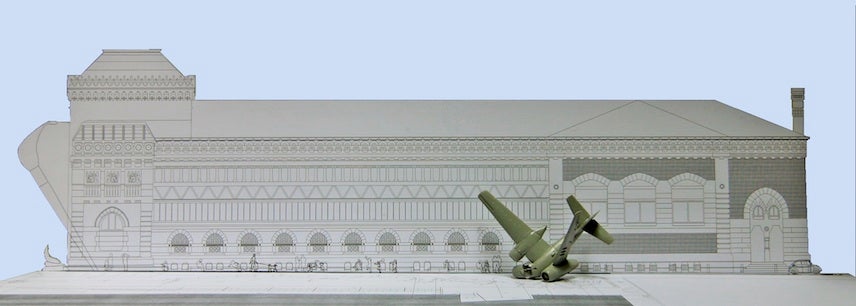
The effect may be different once the sculpture has, er, landed, but it’s — at the least — likely to offer quite a startling counterpoint to the playful Oldenberg work which, as most people know by now, is a cartoonish representation of an artist’s paint brush, complete with a dollop of creamy orange paint that’s fallen to the ground.
As with other Oldenberg works around town, the sculpture will have to grow on us. One way this particular piece will achieve some more depth may be in its lighting. According to Helen Diemer, president of The Lighting Practice, theatrical lights will be mounted on Broad Street’s poles and aimed at the bristles of the brush. Also, internal lighting will illuminate the brush’s tip, as well as that of the paint globule.
For the plaza itself, ambient lighting includes projectors placed on top of Hamilton, and lamps along the ground line that will give off patterns of dappled light. Cognizant of the plaza’s most distinctive feature, the designers have also placed lighting under OLIN’s honey-colored sinuous bench.
As with the plaza itself, lighting has several goals to achieve here, Diemer says.
“First of all, we’re trying to make it a place that is comfortable and safe at any time of the day or evening. Secondly, we recognize that this is an important new public space for the city so we want to arouse people’s curiosity, to draw them over there. And, third,” she continues, “lighting will help foster those visual connections between the two buildings and between the plaza and the surrounding area.”
Lighting will also highlight some of the plantings that OLIN has provided, which include clematis vine scrims separating the glass doors to a proposed cafe. But we’ll have to wait until next year for the white and blue blossoms to flower.
In the meantime, greenery will be restricted to whatever pops up in Griska’s sculpture, which as the name implies, is meant to operate as a sort of greenhouse. “Halting the actions of this machine by grounding it into Lenfest Plaza will turn this mobile weapon into a stationary object, making its mission to harbor medicinal and edible plant life,” reads the project’s artist’s statement.
Whatever. Whether or not the sculptor’s aim is realized, Lenfest Plaza is a sterling addition to Philadelphia’s burgeoning “pedestrian plaza” movement.
Contact the reporter at jgreco@planphilly.com and follow her on Twitter @joanngreco
WHYY is your source for fact-based, in-depth journalism and information. As a nonprofit organization, we rely on financial support from readers like you. Please give today.



